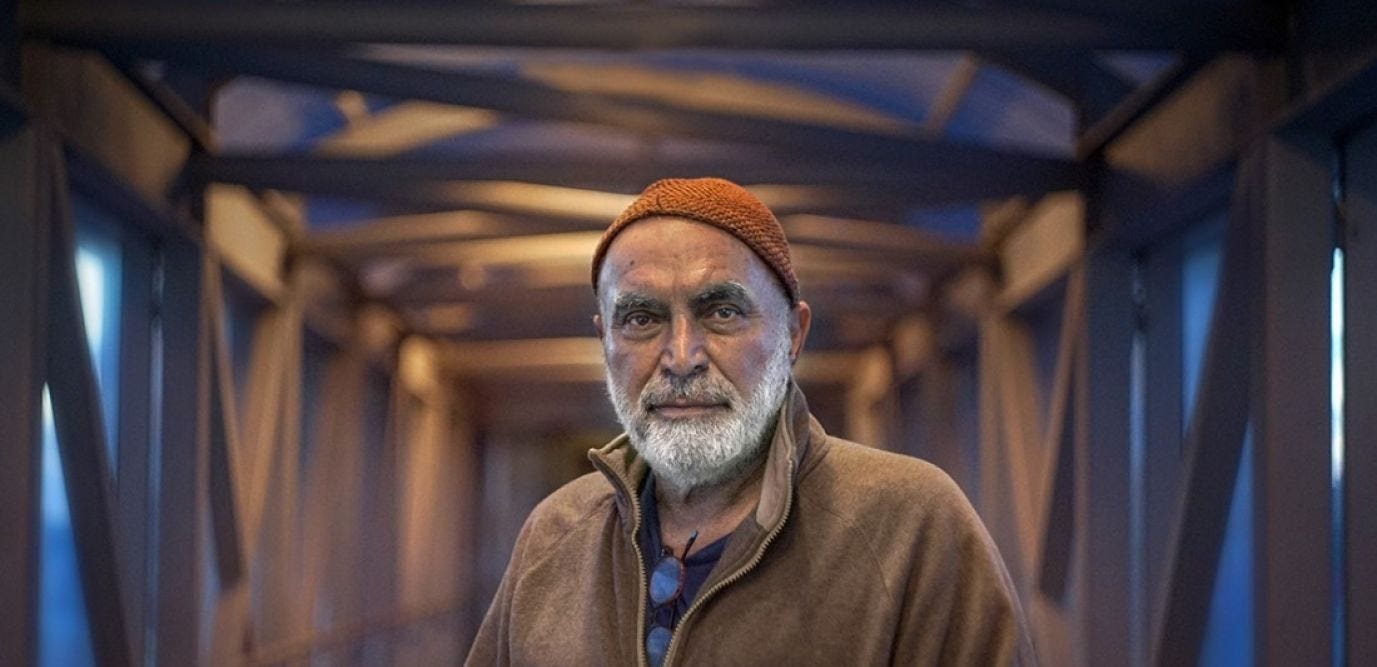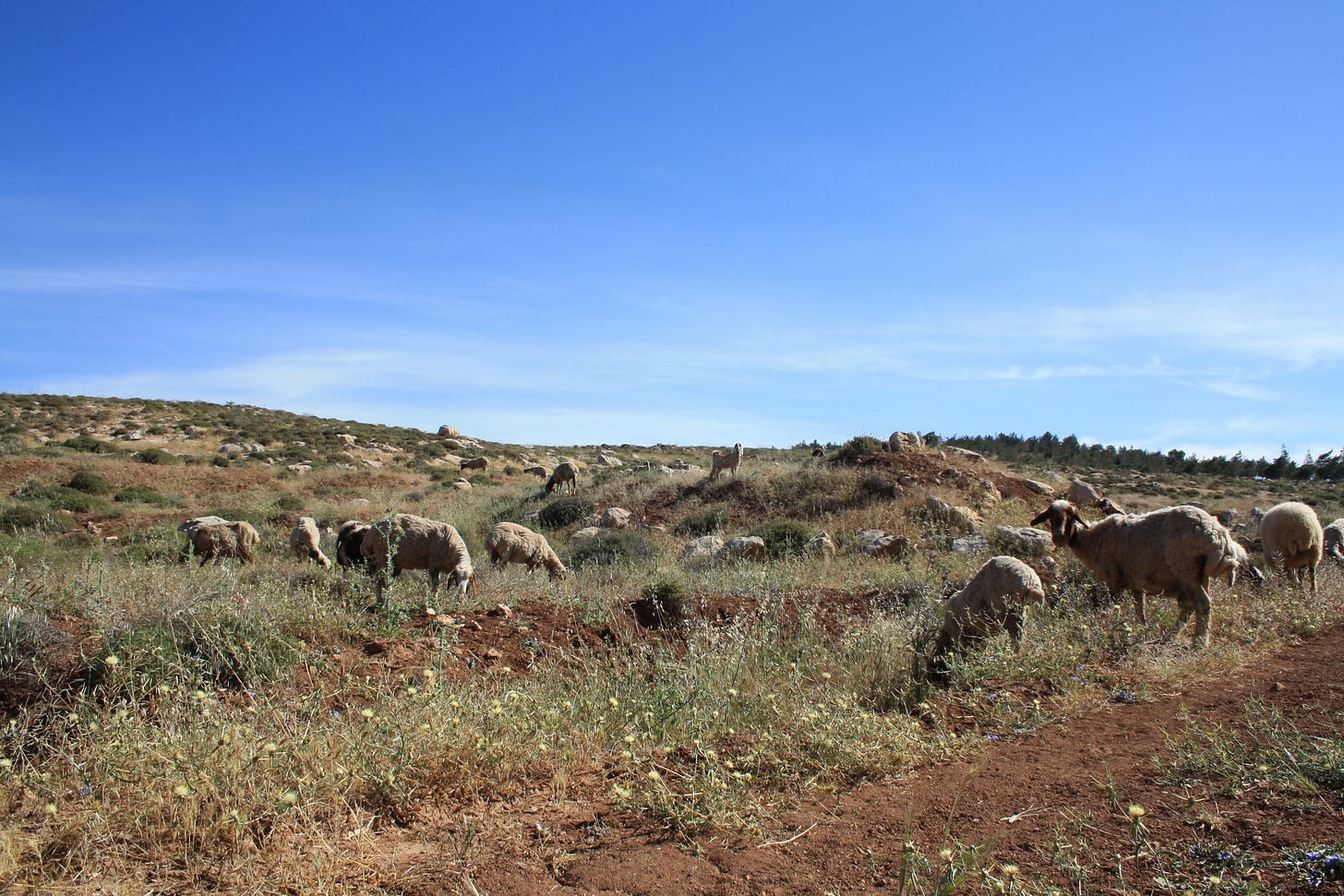Hi 👋,
It’s been a while. The last two months were full of ups and downs, as well as a boatload of work. Thankfully, my schedule has eased ever so slightly so that I can get back to regular newsletters. Onwards.
I remember the first time I met Ezra Nawi. I was working on a master’s degree at the Hebrew University in 2007 and a friend suggested we go to the South Hebron Hills with a group called Ta’ayush, an Arab-Jewish non-violent protest movement that aided Palestinians in the South West Bank. I was fascinated if not a little nervous. We met up with the group early the following Saturday morning in an empty park in West Jerusalem. Ta’ayush was a group of mismatched people with a few clear leaders. New people would just appear on the recommendation of a friend and join the activities. Years later, a right-wing Israeli group took advantage of this informality and infiltrated the group with undercover activists.
Considering the activities we planned to do that day – accompany Palestinians in the Southern West Bank as they tended their flocks under threat of settler and military violence – I should have been more concerned about the haphazard structure of the group.
We waited around in the calm quiet of an early Saturday morning in Jerusalem. As I came to understand, Taayush activists had been going to the South Hebron Hills for years. They had established deep relationships with several Palestinian farming communities and viewed these people as friends rather than props in some grand political drama concerning the future of the Israeli state.
Eventually, we all piled into rented vans ready to head off into the arid desert landscape. The anticipation of the newcomers was palpable. Then Ezra pulled up in a dirty pickup truck that looked like he was living in it. Given the amount of time he spent in that truck, driving backwards and forwards from South Hebron to his flat in Jerusalem, he basically lived in that thing.
I don’t remember well the particulars of that first day out with Ta’ayush. I think we walked with shepherds around one of the more aggressive settlements in the area – Havat Ma’on. It was a lot to process: hearing stories about how settlers attacked school kids as they waited for their bus in the morning and how the military would arrive at the settlers’ request to arrest or detain Israeli activists.
What I do remember is how Ezra was everywhere at once. One moment, he’d be right next to you and the next he’d be shuttling someone to another village or stoped by an impromptu military checkpoint. The military and the settlers had a deep-burning disdain for Ezra and would take every opportunity to make his life hell. But he took it in stride and continued undeterred, appearing everywhere at once and always making jokes with an enormous smile on his face, switching between Arabic and Hebrew. Like a performer, he would enter a space and immediately light it up. His energy was infectious.
Ezra was a plumber by trade but I don’t recall him working all that often. A Mizrahi Jew from an Iraqi family, Ezra was born in Jerusalem in 1951. During the Second Intifada, he became deeply involved with Ta’ayush. Compared with other Israeli protest movements like the Anarchists Against the Wall, Ta’ayush focused its efforts on helping Palestinian farmers who were under constant threat of attack from settlers and the military. Along with several Hebrew University professors, Ezra was Ta’ayash.
Some days, the excursions with Ta’ayush were tiring and sometimes they were extremely enjoyable. We would get up early and arrive home late. But I have the fondest memories of walking in the rolling South Hebron Hills, listening to the wind sweep through the area. Other days would be more intense, especially if the settlers were feeling aggressive.
Without fail, Ezra would evaluate the mood whenever he appeared. As I got more involved with Taayush and spent more time joining them on weekends and even weekdays, I got to know Ezra better. He kept an old refrigerator in the entryway to his apartment. Whenever we’d meet there, everyone was told to put their phones in the freezer because they were certain Israel’s internal security service was tapping their phones. This was in 2009, long before Israel exported similar technology to countries like the UAE and Saudi Arabia.
When I signed up for Twitter back in 2008, I chose the handle Ibn Ezra partly inspired by my academic work on Abraham Ibn Ezra and partly because it translates as son of Ezra. He was such a central figure to so many, that it only felt right.
As I went deeper into the West Bank, my perspective shifted. I started going to villages like Ni’iln and Nabi Saleh on Friday afternoons, where more aggressive protests against the Israeli separation wall and settlement expansion were taking place. It was a gradual and then sudden shift that resulted in my spending less time with Israelis and more with Palestinians.
At the same time, around 2009/10, a popular Israeli protest movement started to take shape in the Sheikh Jarrah neighborhood of East Jerusalem. Several Palestinian families were targeted for eviction in the neighborhood as part of Israel’s plans to encircle Jerusalem with a string of Israeli settlements. In the beginning, the protest movement was raw and organic but it was quickly co-opted by mainstream liberal Zionist activists and, at least in my opinion, became more about domestic Israeli politics than the fate of the families that would eventually lose their homes.
At the time, I wrote the following:
“Sheikh Jarrah is becoming an example of one of the most perverse forms of Zionist domination – the hijacking of a Palestinian struggle in order to play out internal issues of Zionist practice within Israeli society. Non-Zionist Israeli leftists have realized this trend a long time ago and left the movement. The challenge facing the Israeli left will be to deprioritize their own Zionist struggle, and instead embrace the ideas of Palestinian solidarity that the movement was founded on. If these political movements can co-exist in Sheikh Jarrah, the struggle will be truly revolutionary.”
After I published the piece, Ezra called me and said we needed to talk. I remember sitting in his kitchen as he ate dinner and glanced over the newspaper. He told me I needed to cool it, in his own lighthearted way, because it wasn’t nice to air such grievances in public spaces. While he agreed with many sentiments that I expressed, it wasn’t helpful for the movements that were being built.
By the time we spoke, I was already on my own path as it pertained to the Israeli left. I stopped spending as much time in the South Hebron Hills and was eyeing my own move to Ramallah. But Ezra kept in touch with me and wasn’t afraid to tell me to calm down. That warm but honest attitude exemplified something profound about Ezra Nawi.
Eventually, I moved to Istanbul and lost touch with Ezra. The state continued its relentless drive to crush him. Undercover activists from the government-supported Ad Kan organization captured Ezra on camera saying that he would report to the Palestinian Authority those Palestinians who sold land to settlers. The footage ended up on the investigative program Uvda and led to another trial against him. He took the last attempt to silence him in stride but years of confronting the state took their toll. He was diagnosed with cancer last year and died quickly thereafter at the age of 69.
I remember thinking as I sat there in his kitchen that Ezra must feel lonely. But he wasn’t alone in the traditional sense. His life was defined by his close circle of bold activists that dedicated themselves to struggling for justice. He wasn’t talking to me about my work because the ideas upset him, but rather because he didn’t want too much discord in his family. In the people that he spent his life with. I am happy that he included me in that family. His dedication to his beliefs and morals will live long past his death. May his memory be a blessing.
Some things I read recently
A paper from the NBER estimates that had there been a blanket moratorium on all evictions from March 2020, US deaths would have plummeted by 40.7 percent.
Egypt’s dystopia is a lesson for the world (see also: The Dystopian Imagination).
Keep Beethoven weird.
Endnote
As I said at the beginning, it’s been a difficult two months. I started ghostwriting about technology for a popular newsletter, which has been enjoyable but taken over large swaths of my time and bandwidth. At the same time, beaches have been closed in South Africa due to a recent spike in Covid infections. The South African government is in a terrible position with Covid. Not only do we have the variant that the entire world is afraid of but the government’s handling of the crisis has bordered on absurd over the last couple of months. It’s not an easy situation for anyone but it hit me like a ton of bricks (yes, I acknowledge that it’s immensely privileged to speak about my need to be in the ocean). For the past couple of years, surfing has been my anti-depressant. The sudden removal of surf at a critical moment has made me realise just how crucial it is. Over the next couple of weeks, I’m going to share a couple of pieces on this subject: the ocean and mental health as well as South Africa’s fragmented politics during Covid. Thanks for coming on the ride with me.
P.S. I’m going to host some conversations on Clubhouse. Would love to hear from you. If you’re on the platform, look me up.






